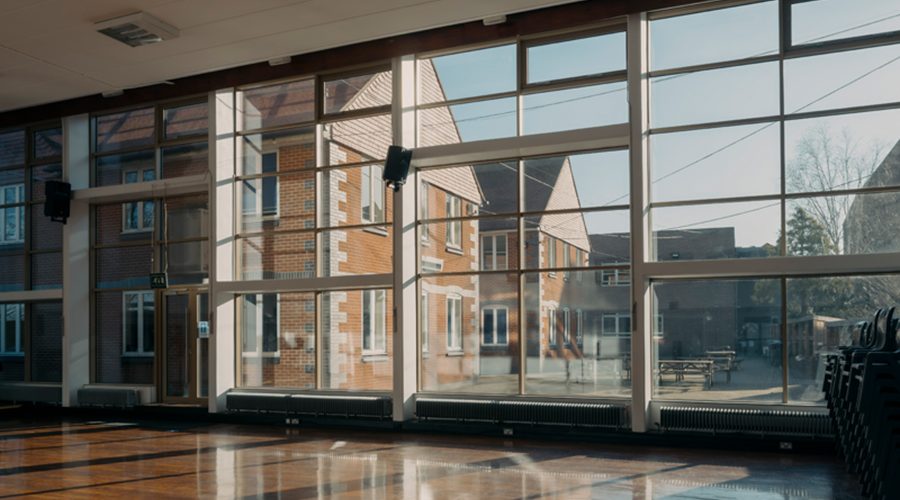The benefits of replacement, energy-efficient aluminium windows and doors can result in large savings on energy bills explains Russell Wallbank, Architectural Project Manager at window and door system supplier Schüco.
Schüco
A pool of water on a window sill or a blind flapping in a cold draft are the telltale signs that a window has reached the end of its life. While you may not need an expert to tell you that a window has failed, it is worth talking to an expert when it comes to selecting the best value product for its replacement.
Often a school will employ a building surveyor to assess the extent of fenestration to be replaced. They will contact a window and door system supplier, such as Schüco, for advice on the most appropriate and cost-effective replacement. This may involve visiting the school to assess the installation, writing a specification for the job and even producing preliminary window drawings.
A concern often raised is whether planning permission is needed to replace a failed window or external door. Generally, planning permission is not required providing the aesthetics are not being changed significantly and the replacement unit’s thermal performance is equal to or better than the one it is replacing (which is almost always the case with modern materials and Schüco thermally efficient framing systems).
While planning permission may not be needed, replacement windows and doors must comply with current Building Regulations which apply to thermal performance, safety, air supply, means of escape and ventilation.
Of course, the big advantage of using a leading system supplier like Schüco is that a school will benefit from a quality, cost-effective, compliant solution. For example, it is good practice to ensure the new window provides at least the same amount of natural light as the one it replaces, because natural light reduces the need for electric light, saving energy, while helping students to concentrate.
Ventilation too is important. In the past, if a classroom required ventilation the teacher would have to open a window, even in winter. Now window systems can incorporate passive or active ventilation to ensure that there is always outside air entering the classroom, even with the windows closed.
Furthermore, where solar gains are likely to cause overheating in summer, glazing can be treated with a heat-reflective coating. Or, if the budget and the planners allow, you can also install other methods of solar control by Schüco such as external louvre blades and brise soleil.
Often the best solution is to replace energy-inefficient windows and doors with units made using a thermally-broken aluminium frame and energy-efficient double glazed units. These will have a significantly better thermal performance, improving comfort in both summer and winter to create a more pleasant learning environment while helping reduce the school’s heating bill.
An additional benefit of using Schüco is that its door and window systems can be combined. For example, the Schüco AWS 70 SC window system can be installed together with the Schüco GFT 50 external door system for high traffic areas, which includes an anti-finger trap solution.






